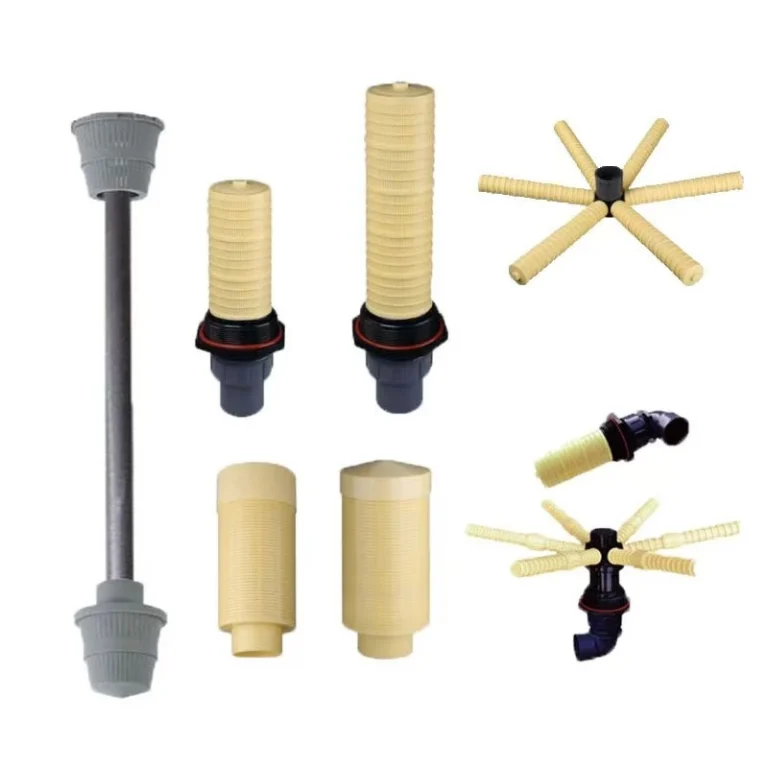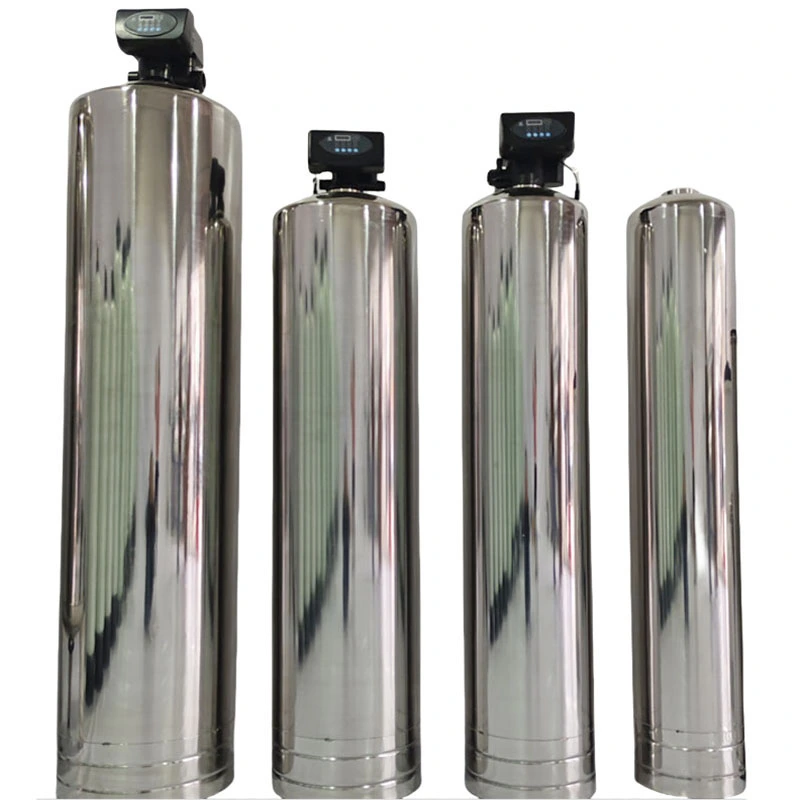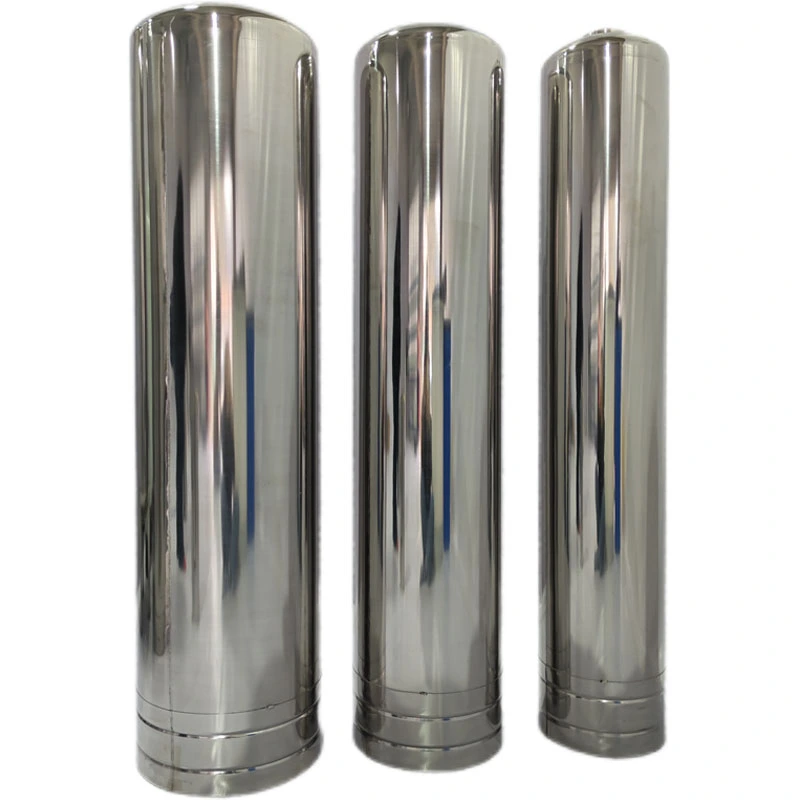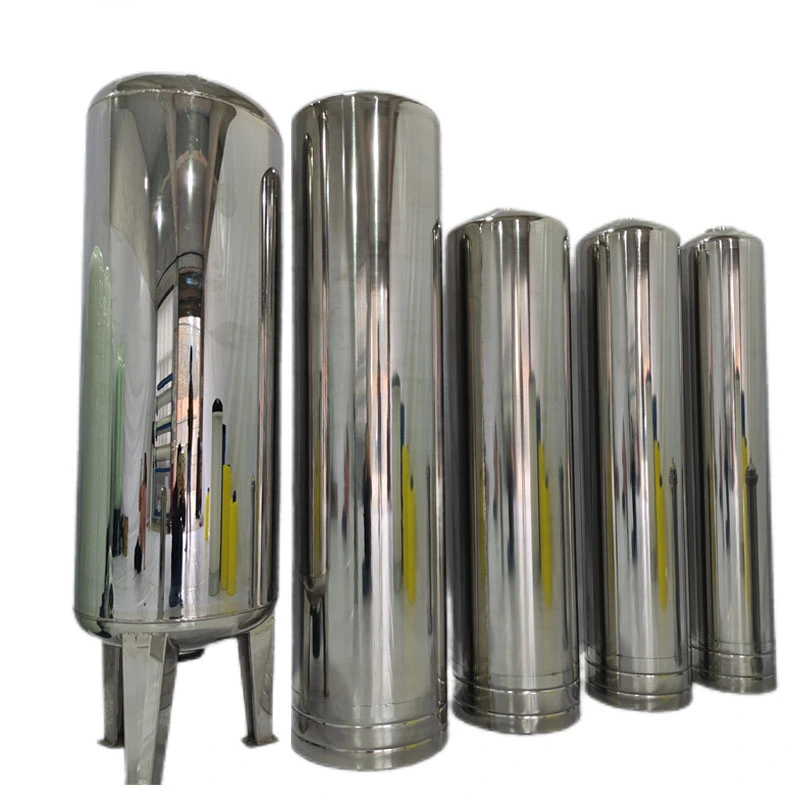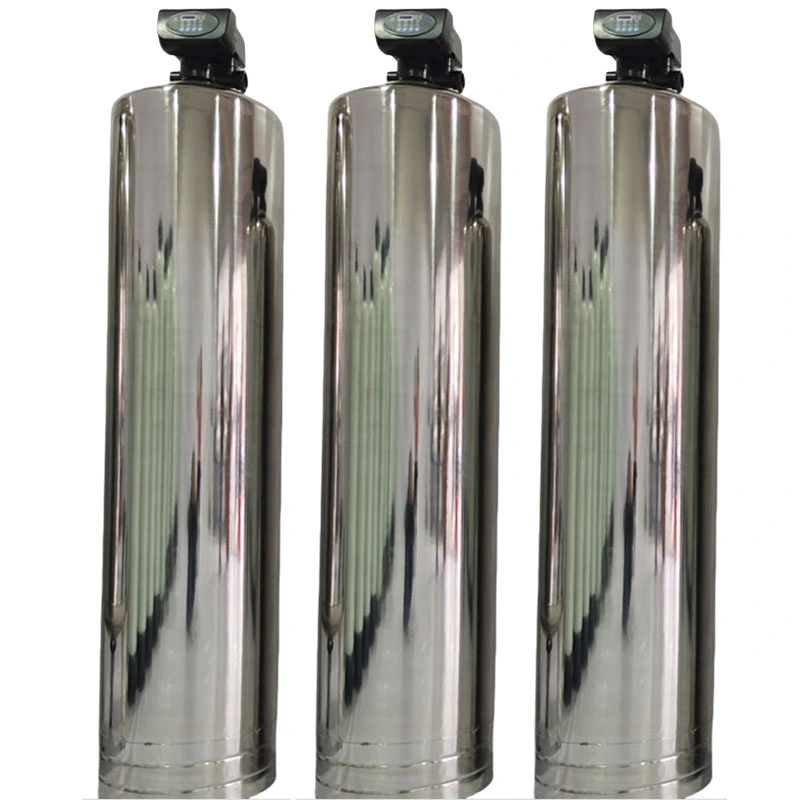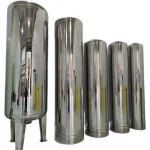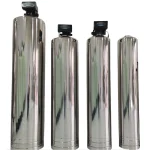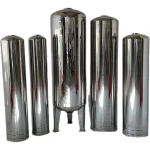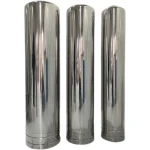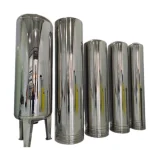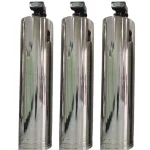BasideWT- Whole Home Water Filtration System & Replacement

Food-Grade Stainless Steel Water Tank – 500L & 1000L Hygienic Filter Pressure Tank for Pure Storage
PRODUCT PARAMETERS
- Product Name: Stainless steel filter tank
- Material: Stainless Steel 304/316
- Inlet/outlet port: 4",6",customized
- Filter media: quartz sand, activated carbon, soft water resin
- Processing Type: Reverse Osmosis, filtration, Softening
- Core Components: Pressure vessel
- Color: Bright silver
- Processing: Pre-treatment
- Capacity: 250L~10000L
- Usage: Pure Water Process
- Packing: Standard Exportation Package
Why Stainless Steel Water Tanks Are the Gold Standard for Pure Water Storage
Stainless steel tanks (also called stainless steel storage containers) are essential equipment across industries requiring safe, durable liquid storage. Made from premium food-grade 304/316 stainless steel, these tanks deliver unmatched corrosion resistance, hygiene, and structural integrity for storing water, chemicals, and food products.
Key advantages:
✔ Zero contamination risk (304/316L steel grades), Superior corrosion resistance – Handles acids, alkalis, and harsh chemicals that degrade other materials,100% food-safe & non-toxic – Meets strict FDA, EC1935, and 3-A sanitary standards, Fully customizable designs – Adaptable to specific pressure, temperature and process requirements, Leak-proof & low maintenance – Precision-welded seams and robust construction ensure decades of use
Fun fact: A 2023 WHO report found stainless steel tanks reduce waterborne pathogens by 99.7% compared to polyethylene tanks.
Stainless Steel vs. Other Water Tank Materials (Comparison Table)
Choosing the right tank material impacts water safety and costs. Here’s how stainless steel water tanks compare:
| Feature | Stainless Steel | Polyethylene | Fiberglass |
|---|---|---|---|
| Hygiene | FDA/GMP compliant | Prone to algae | Chemical leaching risk |
| Durability | 50+ years | 10-15 years | 20-30 years |
| Temp Range | -40°C to 200°C | -20°C to 60°C | -50°C to 120°C |
| Best For | Food/pharma | Residential use | Chemical storage |
Our 2024 case study showed a dairy farm cut cleaning costs by 40% after switching to 1000L stainless tanks.
Stainless Steel Water Tank Specification and Model
Stainless steel filter tank
| Model | A In/Out | D | L(mm) | H(total height) |
| 835 | 2.5” | ∅200 | 850 | 900 |
| 844 | 2.5” | ∅200 | 1050 | 1100 |
| 1035 | 2.5” | ∅250 | 850 | 900 |
| 1044 | 2.5” | ∅250 | 1050 | 1100 |
| 1054 | 2.5” | ∅250 | 1300 | 1350 |
| 1254 | 2.5” | ∅300 | 1300 | 1350 |
| 1265 | 2.5” | ∅300 | 1600 | 1650 |
| 1465 | 2.5” | ∅350 | 1600 | 1650 |
| 1665 | 2.5” | ∅400 | 1600 | 1650 |
Support leg type filter tank
| Model | (L)Volume | Inlet/Outlet | D(mm) | L(mm) | H(total height) |
| 500×1750 | 240 | 4” thread | 500 | 1450 | 1750 |
| 600×1900 | 350 | 4” thread | 600 | 1540 | 1900 |
| 750×1900 | 540 | 4” thread | 750 | 1600 | 1900 |
| 750×2100 | 540 | 6” thread | 750 | 1800 | 2100 |
| 900×1900 | 780 | 4” thread | 900 | 1700 | 1900 |
| 900×2100 | 780 | 6” thread | 900 | 1900 | 2100 |
| 1000×2100 | 960 | 4” thread | 1000 | 1700 | 2100 |
| 1000×2200 | 960 | 6” thread | 1000 | 1900 | 2200 |
| 1200×2200 | 1380 | 4” thread | 1200 | 1850 | 2200 |
| 1200×2400 | 1380 | 6” thread | 1200 | 2050 | 2400 |
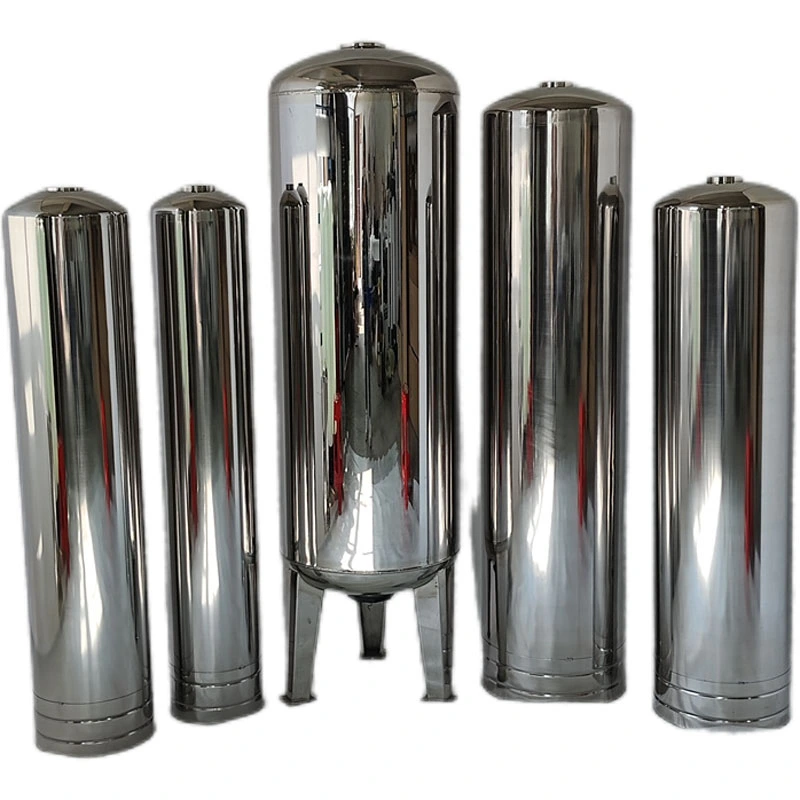
How to Select the Right Stainless Steel Water Tank (5 Steps)
1 – Confirm Steel Grade
- 304 (18/8): Budget-friendly for most uses
- 316L (Marine-grade): Essential for saltwater/chemical exposure
2 – Choose Capacity
- 500L: Compact for breweries/small farms
- 1000L: Ideal for industrial RO filter systems
3 – Assess Pressure Rating
Match to your pump/filter’s PSI (e.g., 7 bar = ~100 PSI).
4 – Verify Welding Quality
Laser-welded tanks prevent bacterial harbor points.
⚠ Warning: Avoid “food-grade” claims without actual certifications!
Common Mistakes When Using Stainless Tanks (And Fixes)
❌ Mistake 1: Ignoring anode rods → Fix: Install magnesium anodes in hard water areas.Mistake 2: Poor cleaning routines → Fix: Use passivation acid every 6 months. Mistake 3: Grounding failures → Fix: Ensure electrical continuity to prevent pitting.
Interestingly, 68% of tank failures (per [Water Storage Journal 2024]) stem from improper installation.
Real-World Applications of 500L & 1000L Tanks
Craft Brewery Water Storage
A 500L 316L tank ensures no metallic taste in beer fermentation.
Pharmaceutical RO Systems
1000L pressure-rated tanks store ultra-pure water for injections.
Off-Grid Rainwater Harvesting
Food-grade tanks with 50μm inlet filters prevent debris accumulation.
Stainless Steel Water Tank Checklist
✅ Do:
- Pick 304 or 316L steel (no “430 grade” for food use)
- Verify pressure rating exceeds system needs
❌ Don’t:
- Use chlorine cleaners (causes pitting)
- Skip annual inspections
- Mount near galvanized pipes (causes galvanic corrosion)
FAQs
Choosing the perfect water treatment system depends on your specific water quality, household size, and needs. We make it easy with our 3-step process:
Water quality testing – analyze your water for contaminants, hardness, and other factors.
Personalized Consultation – Our experts recommend systems based on your results, budget, and water usage.
Customized Solution – From whole-house filtration to targeted solutions (e.g., RO for drinking water, softeners for hard water), we tailor the system to your home.
To determine your water flow rate in gallons per minute (GPM), follow these simple steps:
Prepare for Testing:
- Prepare for Testing:
- Ensure all water fixtures in your home are turned off
- Select the faucet closest to your main water supply line (usually the kitchen sink or an outdoor spigot)
- Conduct the Test:
- Fully open the selected faucet
- Time how many seconds it takes to fill a 1-gallon container
- Repeat the test 2-3 times for accuracy
- Calculate Your Flow Rate:
Use this formula: Flow Rate (GPM) = 60 ÷ Fill Time (seconds)Example Calculation:- If your 1-gallon container fills in 15 seconds
- 60 ÷ 15 = 4 GPM
For more precise measurements or whole-home flow rate analysis, contact our water system specialists. We can help you determine if your current flow rate meets the requirements for any water treatment systems you’re considering.
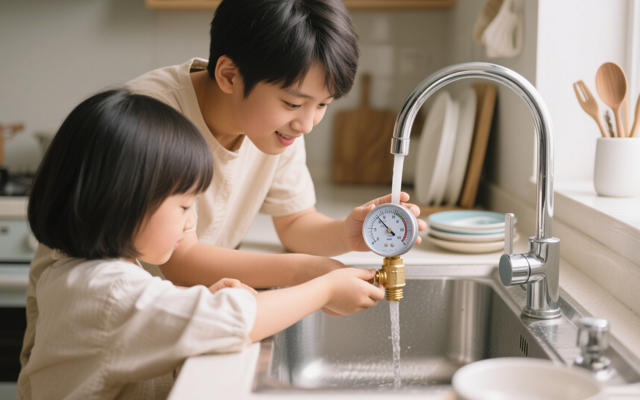
1. Check Multiple Fixtures
Test water pressure at different faucets, showers, and appliances (e.g., kitchen sink, bathroom sink, outdoor hose).
If only one fixture has low pressure, the problem is likely localized (clogged aerator, faulty valve, or pipe issue).
If all fixtures have low pressure, the issue is systemic (main supply, pressure regulator, or water heater).
2. Inspect the Aerator or Showerhead
Unscrew the faucet aerator or showerhead and check for mineral deposits, debris, or rust.
Soak it in vinegar overnight to dissolve buildup, then rinse and reattach.
3. Check the Main Shutoff Valve
Locate the main water shutoff valve (usually near the water meter or where the main line enters the house).
Ensure it’s fully open (turn clockwise to close, counterclockwise to open).
1. Activated Carbon Filters
- Removes:
✅ Chlorine & chloramines
✅ Bad tastes & odors (e.g., sulfur)
✅ Volatile Organic Compounds (VOCs)
✅ Some pesticides & herbicides
❌ Does not remove heavy metals, dissolved minerals, or microbes
2. Reverse Osmosis (RO) Systems
- Removes:
✅ Heavy metals (lead, arsenic, mercury, cadmium)
✅ Dissolved salts (fluoride, nitrates, sulfates)
✅ Microplastics & sediment
✅ Bacteria & viruses (if combined with UV)
✅ Chlorine & chemicals (with carbon pre-filter)
❌ May remove beneficial minerals (can be remineralized)
3. Water Softeners (Ion Exchange)
- Targets:
✅ Calcium & magnesium (hardness)
✅ Low levels of iron & manganese
❌ Does not remove bacteria, chlorine, or heavy metals
4. UV Purifiers
- Kills:
✅ Bacteria (E. coli, coliform)
✅ Viruses (rotavirus, hepatitis)
✅ Protozoa (Giardia, Cryptosporidium)
❌ Does not remove chemicals, metals, or sediment
5. Sediment Filters
- Removes:
✅ Sand, rust, dirt
✅ Large particles & silt
❌ Does not remove dissolved contaminants
6. Whole-House Filtration Systems
Combines multiple methods (carbon + sediment + UV) for broad protection.
- UV: Kills bacteria/viruses but doesn’t remove chemicals or particles.
- RO (Reverse Osmosis): Removes 95–99% of contaminants (heavy metals, dissolved salts) but requires electricity.
- Activated Carbon: Absorbs chlorine, odors, and organic compounds—ideal for pre-filtration.
REQUEST A QUOTE
RELATED PRODUCTS
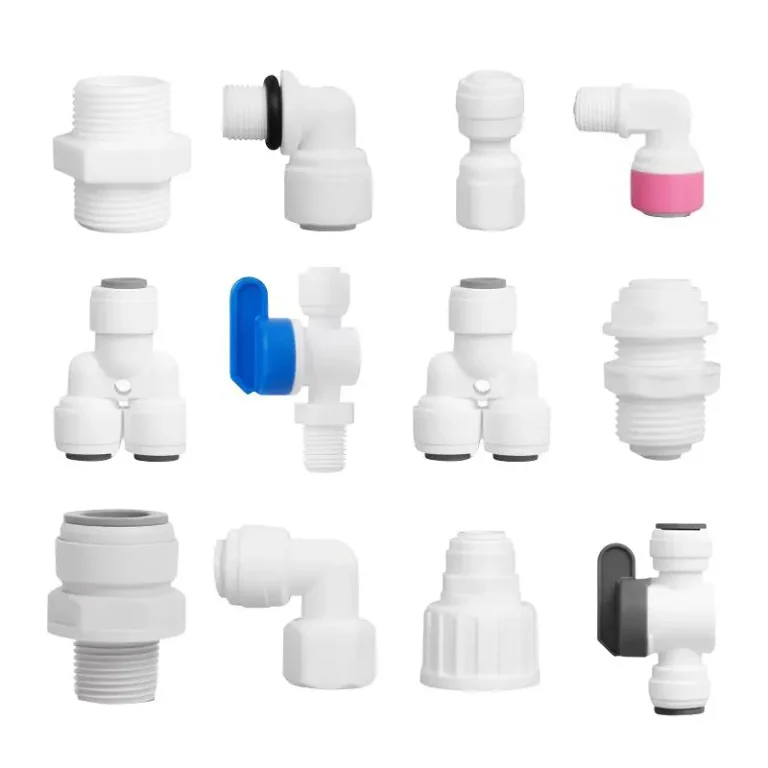
Water Connection Parts Water Filter Tube Fittings 1/4″ 3/8″ Quick Connect Fittings Push in Connector for RO System
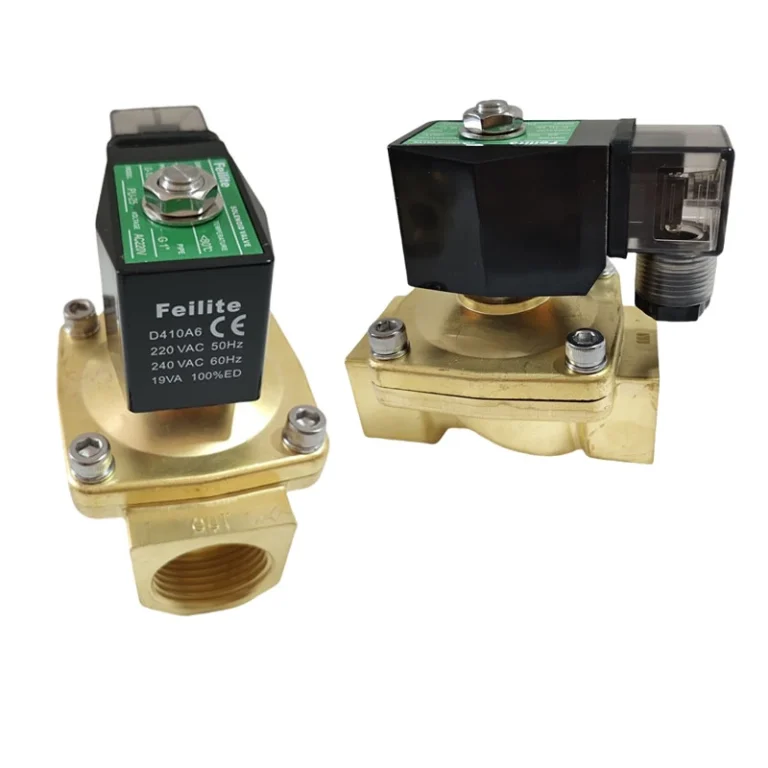
2 Way Solenoid Valve 12v Hard Durable Brass Material ro purified Water Solenoid Valve 24v G1/2in Thread Stable Performance Solenoid Valve
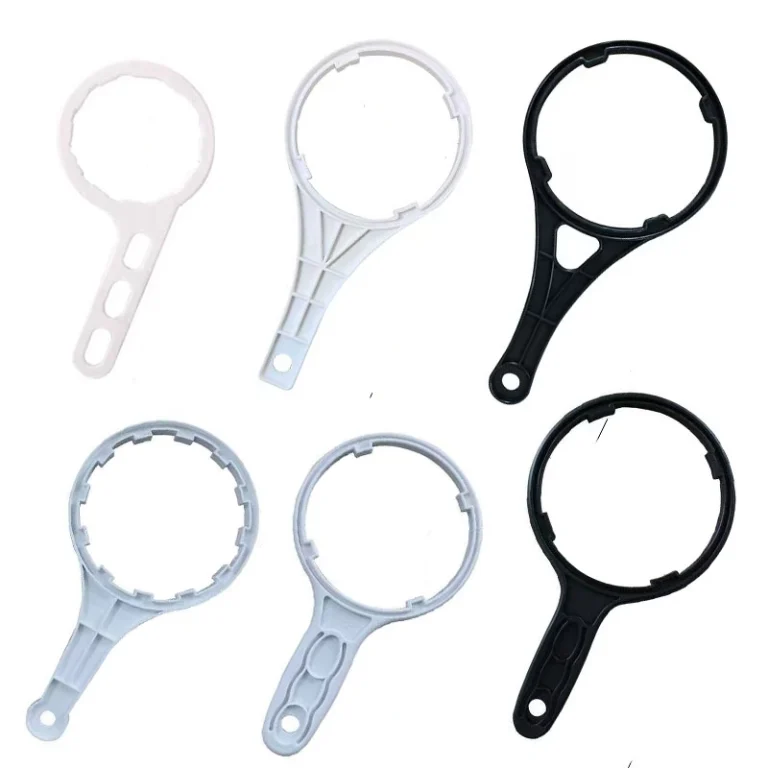
BasideWT Water Filter Wrench for Whole House Housings
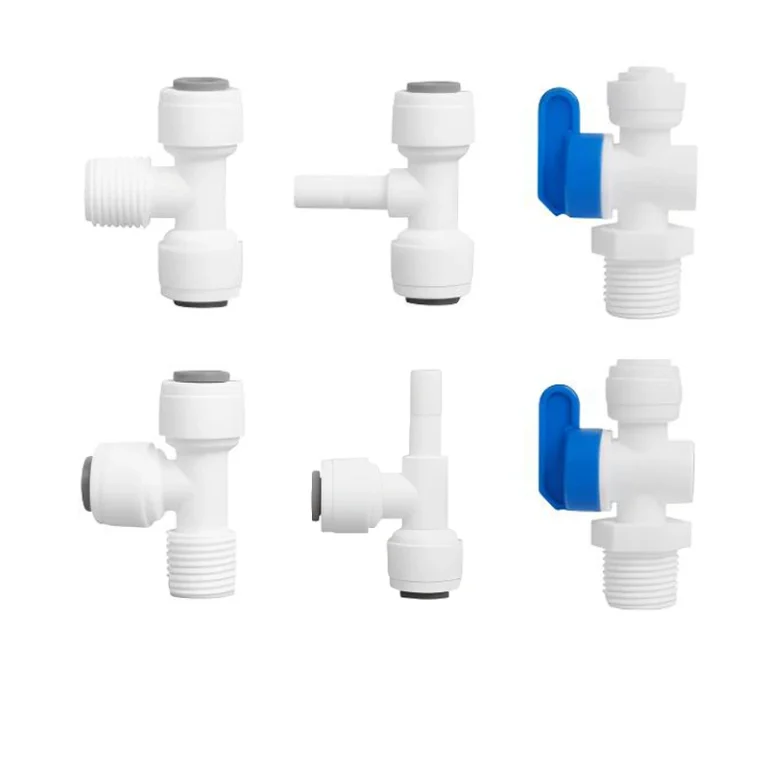
Quick Connect RO Water Filter Fittings Three-Way Fittings 4 Turn 2 Quick Ball Valve
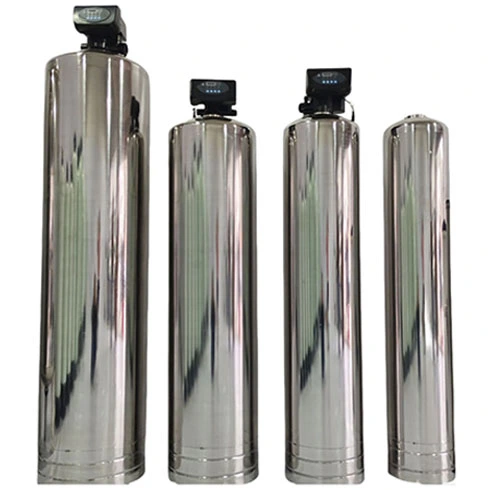
Stainless Steel Water Tank Industrial Water Softener Tanks Rustproof Pressure Vessels for RO Systems | OEM Pricing
